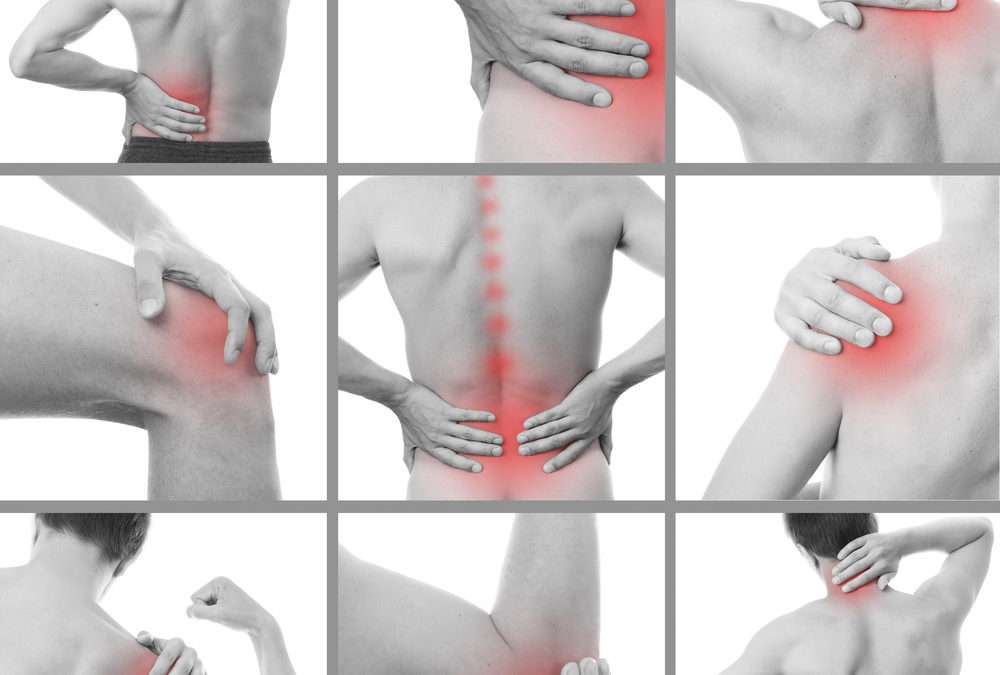“Of pain you could wish only one thing: that it should stop. Nothing in the world was so bad as physical pain. In the face of pain there are no heroes.” ― George Orwell, 1984
Most of us do not enjoy being in pain.
Fleeting, temporary, passing pain is bearable. And it is simply a fact of living. We hurt ourselves: a slight burn on a hot surface, a hard bump against a sharp corner, too much time on our feet – life is full of small and irritating pain.
But chronic pain goes beyond the annoying and irritating. And it can lead to a condition of pain that then comes from a different place in our bodies, often masking the original pain that has caused it. This is what is often referred to as “compensation pain.”
When Pain Multiplies
Compensation pain, or compensatory pain patterns, can be subtle and insidious. The result of this movement dysfunction is additional injury and pain that can deflect from the originating cause.
And this type of pain can be as debilitating and injurious as the initial injury.
One medical study established, for example, that competitive athletes who suffered from hip impingement, or femoroacetabular impingement (FAI), were prone to “compensatory injury patterns associated with intra-articular hip pathology” that resulted in significant disability and persistent symptoms.
Another, more common example, is what happens to individuals who continually walk or stand on hard, flat surfaces, such as a concrete floor. The hard, flat floor offers no ‘give’ or flexibility like natural surfaces do.
As a result, the calf muscle can be overworked while maintaining a support arch in the foot. This muscle weakens over time due to the repetitive stress of supporting all the bodyweight over the arch of the foot while standing or walking.
Over time, the foot habitually pronates and the arch of the foot collapses towards the floor. This is a result of the ongoing movement dysfunction that can result in weakened posterior leg muscles. This excessive pronation of the foot can create additional – and painful – consequences over time.
Taking a Look at Compensation Pain
Simply put, compensation or secondary pain is the result of one injury that leads to another. This compensation pattern or impulse after an acute musculoskeletal injury is your body’s natural attempt to continue functioning so that you can continue performing activities of daily living, playing a sport, or working out.
According to one doctor who is a sports medicine specialist in Colorado,
“Some of the more common types of compensation injuries I see in my practice are:
- Lower back or hip pain starting after a foot or ankle injury because the lower back and hips are picking up some of the work of the foot or ankle.
- Sore upper back from using your trapezius muscle to raise your arm, instead of your injured shoulder.
- Your right knee starts hurting after the meniscus in your left knee is torn, because the right knee is doing the work of the injured left knee.”
Even when we are fully aware of an initial injury and we go to a doctor, there is still a danger of unintentionally setting the stage for a further compensation injury or condition.
For example, sometimes we suffer a significant and acute injury, such as a severely sprained ankle, for example. Often, we will get treated and leave the doctor’s office with some type of “compensatory” aid such as crutches.
This is not a bad thing as it allows us to be mobile while taking stress off our leg and foot to not only help our ankle heal more quickly but will also prevent compensation injuries and subsequent pain. However, it is possible to rely on these aids for too long. Then your body has made dysfunctional adjustments that can still lead to compensation pain.
When this occurs, you may need some type of therapy to restore your body’s natural movement and normally functioning biomechanics.
There Is Relief Possible for Acute and Chronic Pain
- Are you experiencing ongoing or chronic back, leg, or joint pain?
- Is your pain a recurring problem that you’re simply “living” with?
- Do you have pain that seems to have no identifiable cause?
At Pain and Performance Solutions, we can help you with that and we invite you to call for an appointment.
It’s during your initial consultation and assessment that we will learn all we can about your present pain and condition, along with any history of pain or discomfort, as well as your current level of activity.
A full examination will help us determine which form of treatment is best suited to get you on your road to recovery. Your trust in us is key, as is your honesty. Ultimately, getting your body healthy and working properly is the only way to achieve total recovery.
Our goal is to work through the sequence of pain and dysfunction in order to get your body healthy and working properly and to achieve total recovery.
We know that, with time and patience on your part, it is possible to bring relief from pain. Our overall goal is to identify why and how this condition began and then correct it with as little discomfort as possible, so you can return to life without fear of it returning.
Contact us now at (707) 636-4404 or use our online booking form to set up a consultation and an office walkthrough. At the end of the day, we are here for you and to help you achieve a happy and healthy life.
